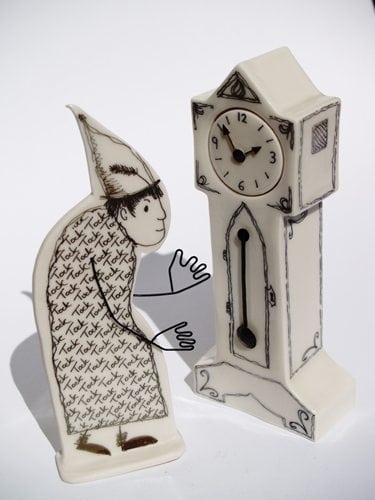As we get older, the light from our bedside lamps may not be enough to help us read a magazine before bed.
Throughout our lives, our vision is undergoing changes that eventually make it harder to see. While these changes are minor for about half our lifetime, they become more noticeable once we reach 40. Our mid-life years are about more than buying a sports car for a last drop of youth as we creep toward retirement, as this period is when visual capabilities may decline.
What's happening in your eye
A few changes are common as the eye begins to age more noticeably. One of these changes is presbyopia, a condition that occurs when you have trouble focusing on objects at close range. The cause for this change is often attributed to hardening of the crystalline lens, which is usually more flexible to allow for better focusing in our younger years. Many people turn to reading glasses and task lights to help them adjust to the changes.
We also may have some problems with retinal illuminance because of changes to our crystalline lens, which starts to absorb more light while our pupil gets smaller.
Common diseases of the aging eye
As we get older, we may need more light for reading or other tasks as a result of declining vision. We may also develop one of a few common eye diseases:
- After age 60, many people suffer age-related macular degeneration, which occurs when the macula – a small part of the retina that is responsible for central vision – breaks down. People who experience AMD may have problems seeing objects in direct line of sight or experience other symptoms such as seeing straight lines that appear wavy, blurry vision and darkness in their central vision.
- Glaucoma, on the other hand, affects peripheral vision before central vision. This is a disease of the optic nerve that can cause people to experience tunnel vision, and in some cases, blindness if left untreated for too long.
- Many people over 65 get cataracts, which is when the crystalline lens of the eye becomes cloudy and cause problems with seeing under low light .
Lighting for the aging eye
Although we may think we have the brightest floor lamp, most homes do not have adequate lighting to accommodate the issues associated with the aging eye. As we age, these issues become worse and the need for appropriate lighting becomes even more noticeable.
There are many products that promise better reading light for aging eyes, but few can deliver. This is not to say that they are not well-crafted products, but some of these lamps do not offer a comprehensive pool of light. If, for instance, you were to use a handheld task light to read a book, you could cause more strain on your eyes, which are constantly moving. As your eyes move around, they have to adjust their focus to different lighting conditions, which can lead to fatigue, loss of concentration and headaches.
Instead of using a bright reading lamp that only covers a small area, it is more effective to employ a lamp that provides a uniform, ambient glow throughout the room as well as the task surface. Lighting for the aging eye also has to have minimal glare, a problem that can be especially discomforting for individuals with cataracts.
Why its important
For some, having the ability to read or complete other tasks is more than a hobby. Investing in a full spectrum lamp may be a means of ushering in a lifestyle change and improving well-being. Microsun offers lighting solutions that target the needs of the aging eye so that you can continue doing the things you enjoy, whether they include needle point, skimming a romance novel or reviewing reports at work.




Comments are closed.